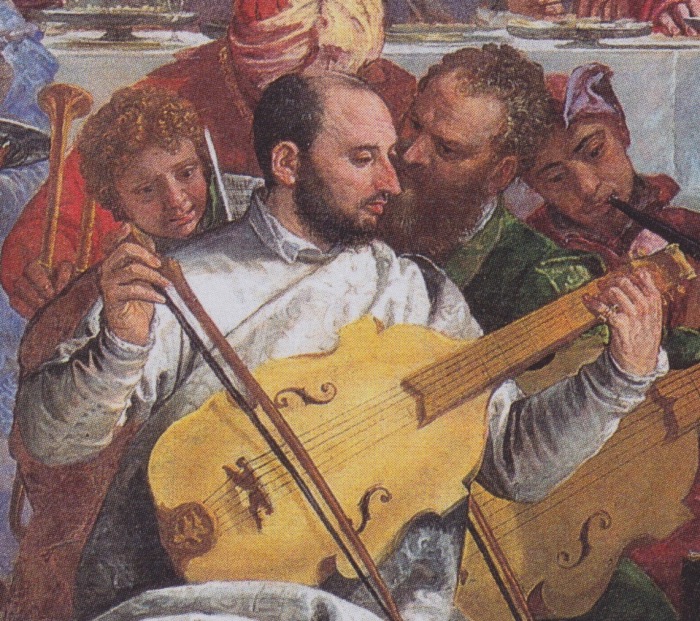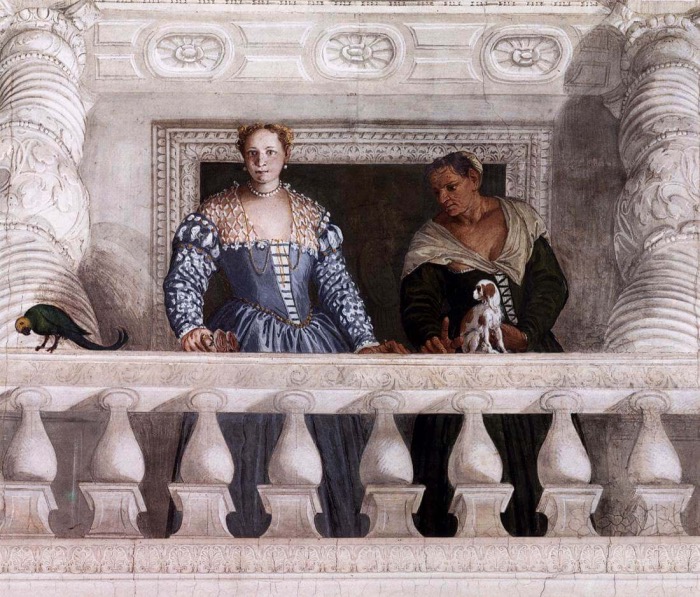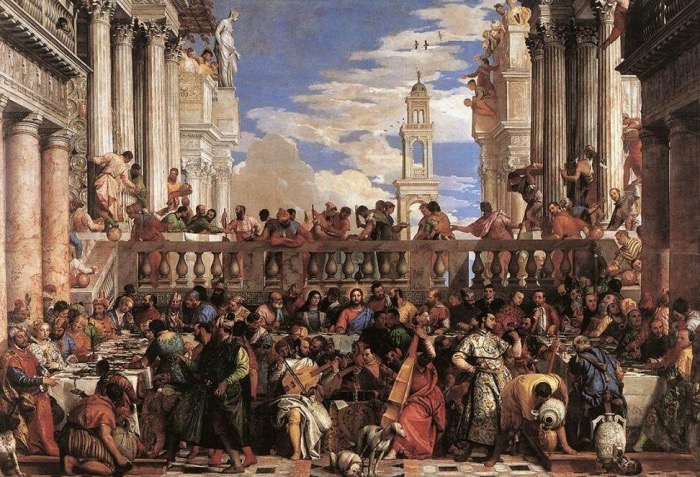
5 THINGS TO KNOW ABOUT PAOLO VERONESE: LIFE, WORKS AND CURIOSITIES
Paolo Veronese was a 16th century Italian painter and is considered one of the most important representatives of Venetian Renaissance painting.
His real name was Paolo Caliari, but he was known as ‘Veronese‘ because he was born in the city of Verona.
Veronese painted many commissioned paintings for Venetian churches and palaces, often depicting biblical and mythological scenes with great pomp and majesty.
His most famous work is ‘The Wedding at Cana’, a large oil painting depicting the miracle of Jesus in the town of Cana, described in the Gospel of John.
5 things about Paolo Veronese

1. WHERE PAOLO VERONESE LIVED
Paolo Veronese was born in Verona in 1528 but lived almost all his life in Venice, where most of his works were commissioned and executed.
In Venice, Veronese became one of the most important representatives of Venetian Renaissance painting, and his sumptuous style was highly appreciated by the patrons of his time.
The artist worked in several churches and palaces in Venice, painting numerous commissioned works, including frescoes, oil paintings and monumental canvases.
2. THE WORKS OF PAOLO VERONESE
Paolo Veronese created many important works during his career. Here are some of his most famous paintings:
- “The Wedding at Cana” – This large canvas depicting the miracle of Jesus at the wedding feast in Cana is considered his most famous work.
- “Allegory of Peace and Abundance” – This work, showing the personification of peace and abundance surrounded by flowers and fruit, is considered one of his masterpieces.
- “The Crucifixion” – This monumental painting shows Jesus crucified with Mary, St John and other biblical characters at the foot of the cross.
- “Mars and Venus with Cupid and a Dog” – This painting depicts the mythological couple of Mars and Venus surrounded by an idyllic landscape.
- “Saint Jerome in the Study” – This painting depicts Saint Jerome, one of the Church Fathers, studying in a richly furnished room.
- ‘Juno Pours Gifts on Venice’ – one of Paolo Veronese’s early masterpieces made for the Doge’s Palace in Venice.
3. THE QUESTION OF PAOLO VERONESE’S SUPPER IN THE LEVI HOUSE
The question of the Supper in the House of Levi concerns one of Paolo Veronese’s most famous works, namely ‘The Banquet in the House of Levi’, painted in 1573 for the refectory of the Church of San Giovanni e Paolo in Venice.
The painting depicts a banquet in the house of Levi, with Jesus and his disciples seated at the table with other figures. However, the scene also features numerous characters depicted in lavish dress, including some jesters, animals and soldiers. Moreover, the position of Jesus, standing and facing the viewer, is unorthodox in relation to the conventions of sacred art of the time.
Following the presentation of the painting at the Church of San Giovanni e Paolo, the congregation and clergy of Venice criticised the work was called vulgar. Veronese was called upon to justify his choice to depict the scene in this way, and in response he claimed that the painting was an artistic interpretation of the biblical scene, and that the additional characters were included to represent the daily life of 16th century Venice.
Despite Veronese’s defence, the painting was initially rejected by the Church, which demanded that it be modified. However, instead of modifying the painting, Veronese renamed it ‘The Banquet in Simon’s House’, referring to another dinner described in the Bible, and thus it was accepted by the Church.
The issue of the Supper in the House of Levi became an example of conflict between art and the Church in the Italian Renaissance, and Veronese’s defence of his right to freely interpret biblical scenes inspired many later artists.
Today, the work is considered one of the most important paintings of the Venetian Renaissance and is still one of the main attractions of the Capodimonte Museum in Naples, where it is currently located.

4. CURIOSITIES ABOUT PAOLO VERONESE
Paolo Veronese was highly appreciated for his sumptuous style and bold use of colour. However, some of his paintings were criticised by the ecclesiastical authorities and considered vulgar.
He was also a skilled decorator and created numerous stage sets for theatrical performances and parties of the Venetian nobility. He also devoted himself to the decoration of fabrics and clothing.
Paolo Veronese’s workshop was located in Venice, where he lived and worked with his assistants and where he received his illustrious friends. These included the poet Torquato Tasso, who called him ‘the Titian of our time’.
Veronese’s works inspired many later artists, including the French painter Eugène Delacroix.
5. THE STYLE OF PAOLO VERONESE
One of the most interesting aspects of Veronese’s art is his use of colour and light to create illusionistic effects and depth. His works are often characterised by a great variety of colour tones.
Veronese’s importance in the history of art has been recognised internationally, and many of his works are now housed in important museums around the world.
His monumental canvases, such as ‘The Wedding at Cana’ and ‘The Crucifixion’, are considered among the greatest works of art of the Italian Renaissance, and his style influenced many later artists.
In summary, Paolo Veronese was a great artist whose work represents an important moment in the history of Italian art and the Venetian Renaissance.

